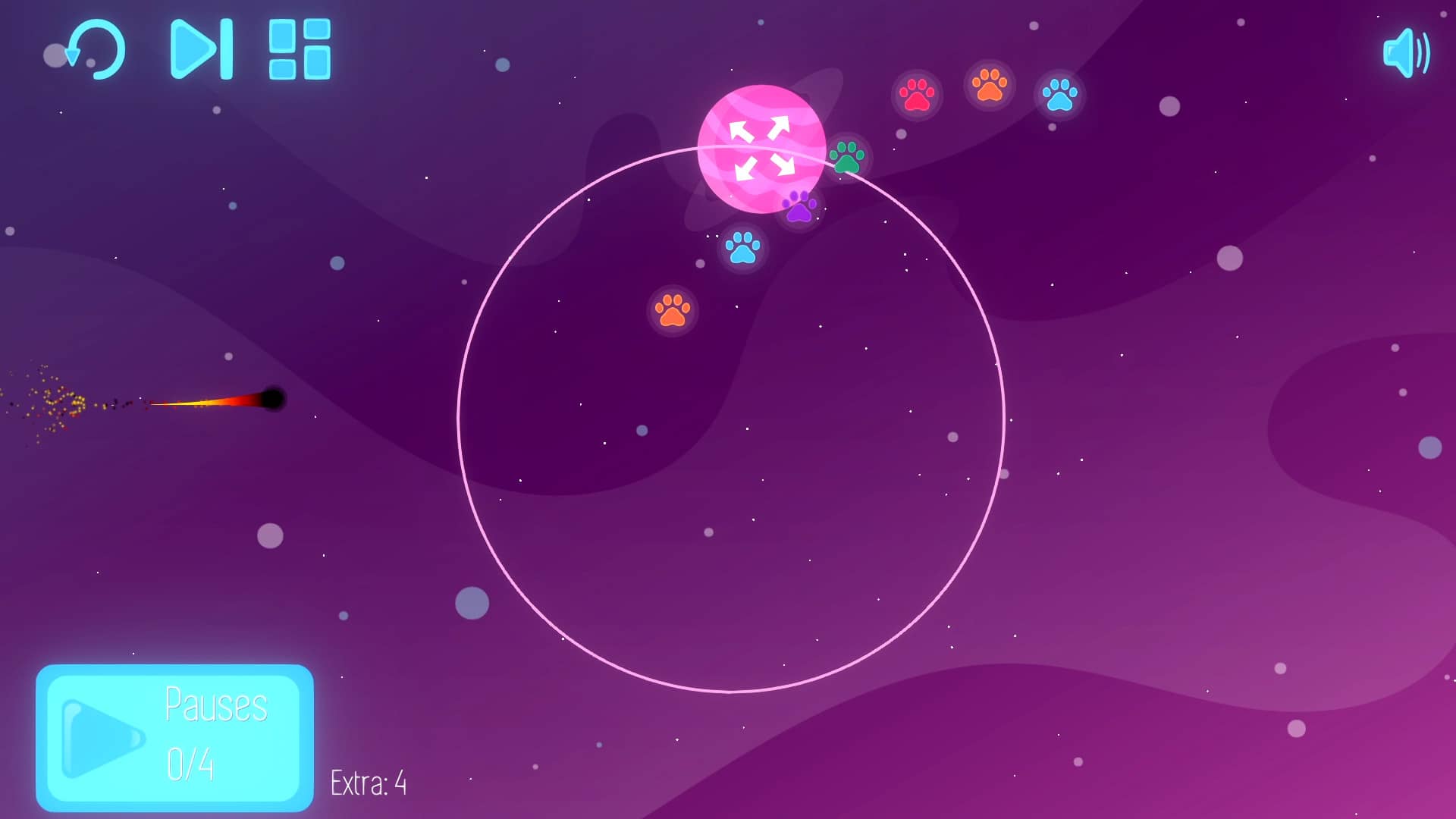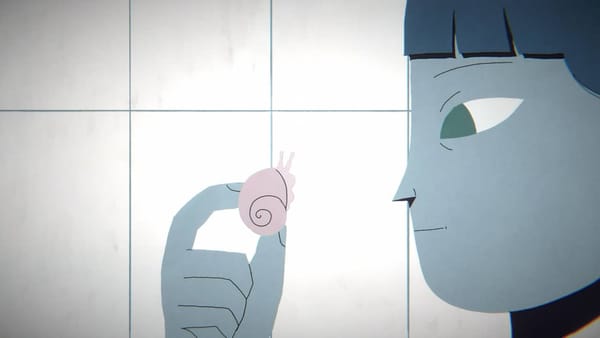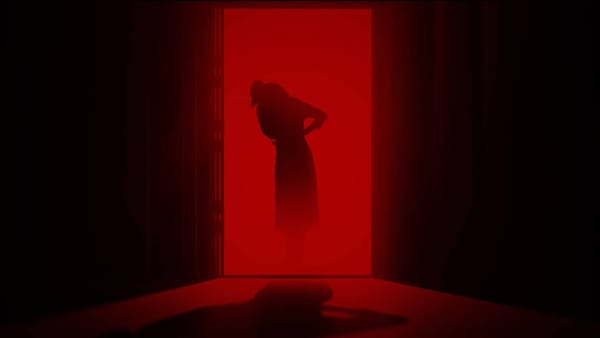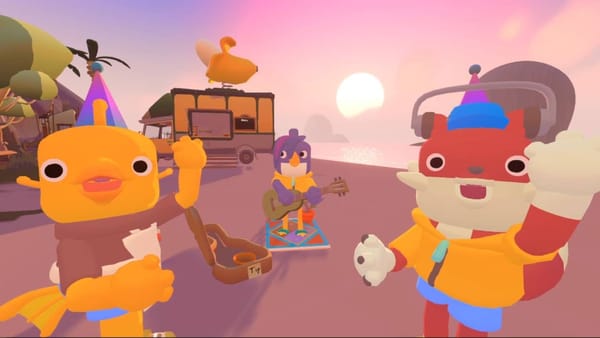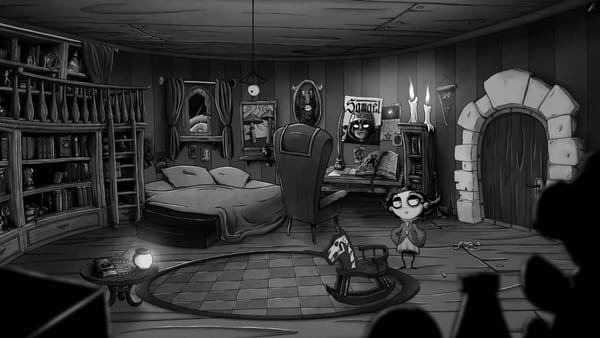Quick-fire puzzle games need to be precisely that…quick-fire. Good news then, Graviter is one of those instant pick up and play type games where you need to go through the tutorial, but it’s just as swift as the gameplay.
In fact, a lot of Graviter’s gameplay is blink, and you’ll miss it. There’s no-nonsense here, just straight to the problem, and once you’ve solved it, it’s on to the next. Like the speed of a rocket. Coincidentally…
In the game, you have to get a rocket through many challenges, collecting paw prints in the process. This rocket is on a set route unless you intervene. There’s no direct control of this vessel; instead, you have to manipulate the environment, creating new paths along the way.

This is achieved by moving planets. Literally. You’ll have various options through each stage, such as resizing a planet or moving it around a set area or even making it translucent. What does this do? It changes the trajectory of your rocket through gravitational forces, giving very realistic physics.
But remember how I said Graviter was quick-fire? Once you resize and position your planets and set the course, your rocket shoots off at blistering speeds, and unless you’ve created the perfect line, it’ll disappear off-screen or crash. And die. So this is where the pause comes into effect, and I so wish I could have led up to that with some ‘collecting paws’ and pausing type wordplay. The thought was there.
With each stage, you have a limited amount of pauses. What that means is creating a path for your rocket, then when they’re so far in orbit, press the A button once more to stop them mid-motion. Now it’s a case of repositioning the worlds once more and creating a new path; the objective to collect those paws once more. When it’s done, on to the next.

The theme here with Graviter is how swift it is – from the rocket’s speed to the transitions to the next level. However, the gameplay isn’t as fast during the planning stages. The tutorial was pretty good and explained the mechanics well. Naturally, it was easy (it was a tutorial), and for the first few missions, everything was usually over in a few seconds.
On my part, it was a lot of guesswork in Graviter as I couldn’t seem to grasp the physics. That’s no slur on the developer Emil Markiewicz’s good name; they’ve captured it well here. I’m on about the concept of physics. Sure, I get gravity – I’ve been using it for the last few years, but the solutions weren’t a cakewalk.
And for that reason, I’ve been enjoying my time during this Graviter review. What that translates as: I haven’t beat it yet, and I find it very challenging but fair. There aren’t any cheap tricks in the game; it’s mostly logical, and evidentally, something I lack.

Graviter is the second puzzle title from No Gravity Games that hooked me from the start – the other title being Splashy Cube, which I encourage you to seek out. I dunno, maybe read a review or sumink? The very nature of a puzzle game should be a challenge – if it’s too easy, then it’s a walking simulator. When it came to entertainment, I wasn’t doing cartwheels with joy, but I like how engaging the game is.
And it has to be said; the minimalistic presentation works well. There’s the option to switch between a colourful version and a more ‘elegant’ approach. Additionally, with all these paws you collect, you can customise your experience with rainbow trajectories and laser-guided paths. It’s a nice touch, but nothing that will blow your mind.
What is important to note is Graviter is a cracking puzzle game. There are 101 levels (apparently!), and they really will keep you occupied. Though it’s a challenging game, it’s a game you can do in stages, dropping in and out – even skipping some levels until you’re ready to brace them once more. There’s a playable demo for Steam, if you have a PC, so give it a whirl. However, it’s a thumbs up from me.


